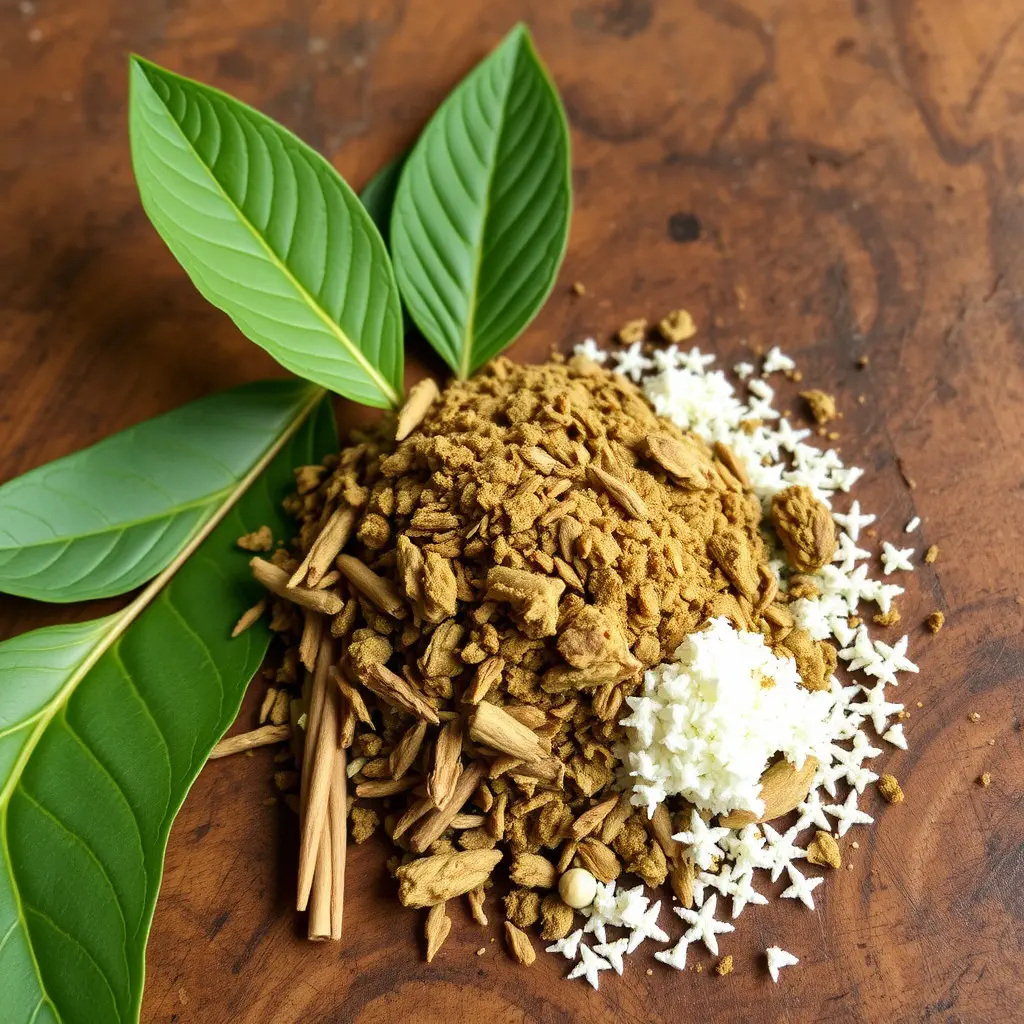2023 sees the Indiana kratom law classifying kratom, derived from Mitragyna speciosa leaves, as a supplement rather than a controlled substance within state lines, diverging from the U.S. Drug Enforcement Administration's Schedule I categorization. This legislative distinction has been upheld amidst legal challenges, ensuring kratom remains accessible in Indiana. The state law regulates kratom sales and distribution, overseen by both local retailers and online vendors following state guidelines. Consumers are encouraged to stay informed on legislative developments, as the status of kratom may evolve due to ongoing debates about its safety and efficacy. For those interested in kratom for enhanced physical endurance, scientific research indicates that its alkaloids may influence opioid receptors, potentially increasing pain tolerance and reducing fatigue. Indiana's specific regulations require adherence to age restrictions and labeling standards for vendors, with a strong emphasis on safety and informed use. Prospective users are cautioned to start with low doses to assess individual tolerance, consult medical professionals, and remain updated on research findings. Compliance with Indiana kratom statutes is crucial when considering its use in endurance training, alongside maintaining proper nutrition, hydration, and overall health to mitigate potential risks and ensure safe practices.
Exploring the potential of kratom for endurance enhancement, this article provides a nuanced look at its role within physical training. Beginning with an overview of kratom’s legal standing in Indiana, readers will gain insight into how this plant-based substance is regulated within the state. Subsequent sections delve into the scientific research supporting kratom’s effects on endurance and offer practical advice for its strategic use in training routines, all while adhering to Indiana’s kratom regulations. Join us as we navigate the intersection of natural supplementation and athletic performance optimization.
- Understanding Kratom and its Legal Status in Indiana: A Comprehensive Guide
- The Role of Kratom in Enhancing Physical Endurance: Insights and Research Findings
- Strategic Use of Kratom for Endurance Training: Dosage, Strains, and Safety Considerations under Indiana Kratom Laws
Understanding Kratom and its Legal Status in Indiana: A Comprehensive Guide

Kratom, derived from the leaves of Mitragyna speciosa, a tropical evergreen tree native to Southeast Asia, has gained attention for its potential effects on energy, mood, and pain relief. In Indiana, as across the United States, the legal status of kratom is subject to both state and federal regulations. At the federal level, the U.S. Drug Enforcement Administration (DEA) has placed kratom in the Schedule I category, indicating a high potential for abuse and no accepted medical use. However, this placement has faced legal challenges, and as of my knowledge cutoff in 2023, kratom remains legally accessible in Indiana under state law. The Indiana kratom law specifically addresses the sale and distribution of kratom products within the state, classifying it as a supplement rather than a controlled substance, which allows for its purchase from retailers or online vendors that comply with state regulations. It’s important for consumers to stay informed about any changes in legislation, as the legal landscape for kratom can evolve rapidly due to ongoing debates regarding its safety and efficacy. Always refer to the most current Indiana kratom law when considering the use of kratom for endurance improvement or any other purpose.
The Role of Kratom in Enhancing Physical Endurance: Insights and Research Findings

Kratom, a mitragynine-speciosa plant native to Southeast Asia, has garnered attention in various sectors, including fitness and health. Researchers and athletes have explored its potential effects on physical endurance, with some studies indicating promising outcomes. The alkaloids present in kratom, particularly 7-hydroxymitragynine and mitragynine, may interact with the body’s opioid receptors, potentially enhancing pain tolerance and reducing fatigue. This could allow individuals to push their physical limits further and for longer periods without experiencing the same level of discomfort or exhaustion.
In the context of legal considerations, it’s relevant to note the stance of Indiana on kratom. The Indiana kratom law positions kratom as a scheduled substance, with specific regulations defining its legality. This legislative framework necessitates careful consideration by consumers and researchers alike, ensuring compliance while exploring the full spectrum of kratom’s effects. The potential for endurance enhancement must be balanced against the legal landscape, as research continues to evolve. Users interested in incorporating kratom into their fitness regimen should first consult with healthcare professionals and stay informed on the latest legal status within their jurisdiction, such as Indiana, to ensure safe and responsible use.
Strategic Use of Kratom for Endurance Training: Dosage, Strains, and Safety Considerations under Indiana Kratom Laws

Incorporating kratom into an endurance training regimen requires careful consideration, particularly under Indiana’s comprehensive kratom laws. Kratom, a plant from Southeast Asia with alkaloids that can influence pain perception and energy levels, has gained attention among athletes seeking to enhance their performance and endurance. When strategically used, certain strains like the more stimulating Maeng Da or White Vein Thai may aid in prolonging physical activity by potentially elevating mood and reducing fatigue. However, it is crucial to adhere to Indiana’s regulatory framework regarding kratom. According to these laws, users must be 18 years or older to purchase kratom products, and vendors are required to follow strict labeling guidelines. Safety considerations are paramount; individuals should start with a low dose to assess their tolerance and proceed cautiously, as the effects can vary greatly from person to person. It’s also essential to maintain proper hydration and nutrition alongside kratom use to support overall well-being during intense endurance training sessions. Regular monitoring of one’s health status is recommended, especially since long-term effects are still under investigation. Users should always source kratom from reputable vendors and consult with healthcare professionals before integrating it into their fitness routine to ensure compliance with Indiana kratom laws and to minimize potential risks.
In conclusion, the potential of kratom to improve endurance, as explored within the context of Indiana’s legal framework, presents a nuanced topic for athletes and enthusiasts alike. The insights and research findings underscore the importance of a strategic approach when incorporating kratom into endurance training regimens. Adherence to Indiana kratom laws ensures both legality and safety. Prospective users are advised to consult with healthcare professionals and stay informed on the evolving legal landscape surrounding kratom use. By doing so, individuals can make informed decisions that align with their fitness goals while respecting the regulations set forth by Indiana state law.






